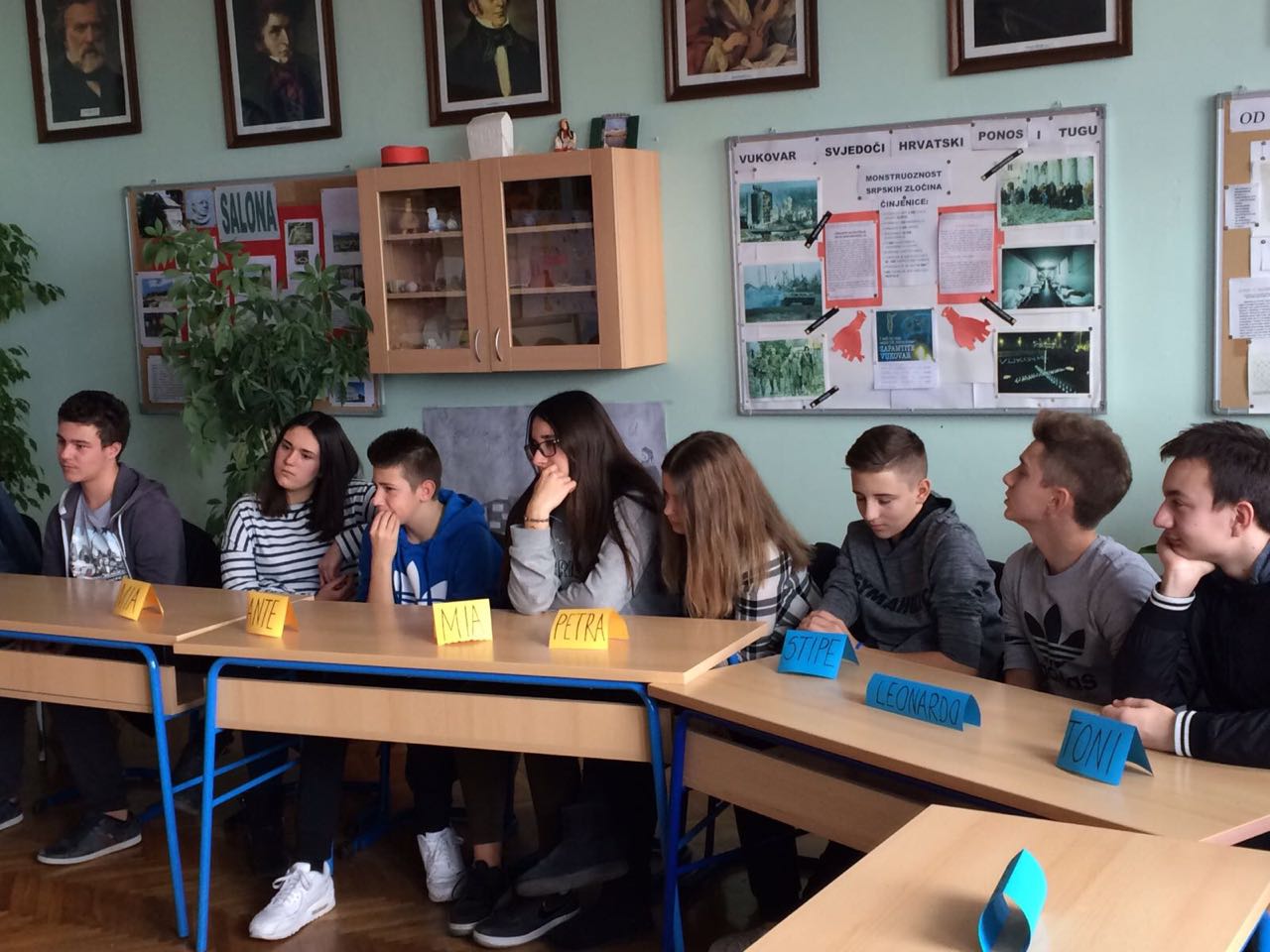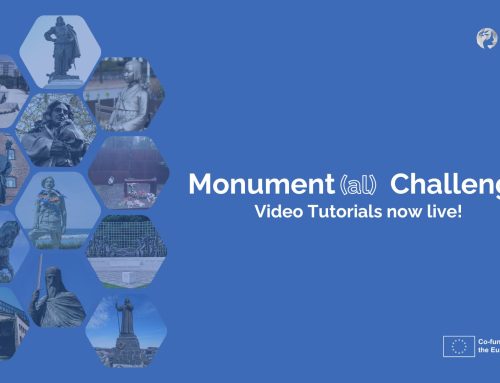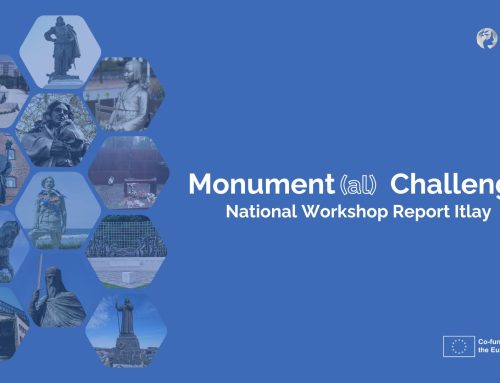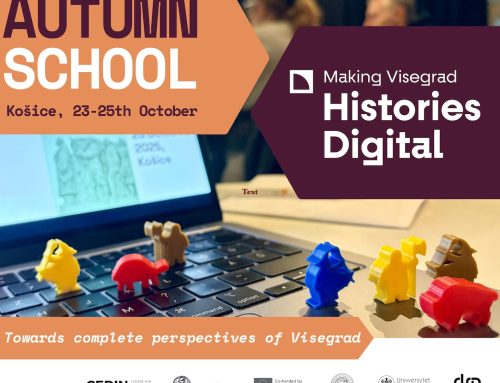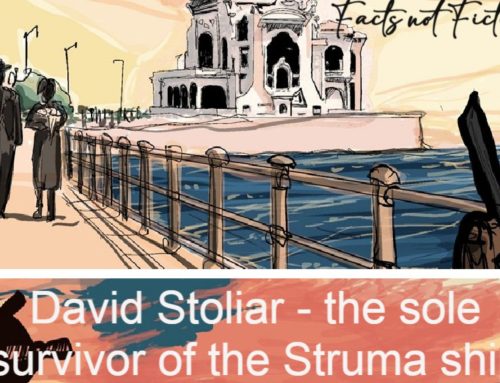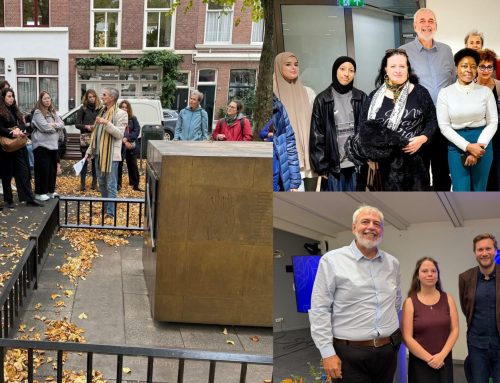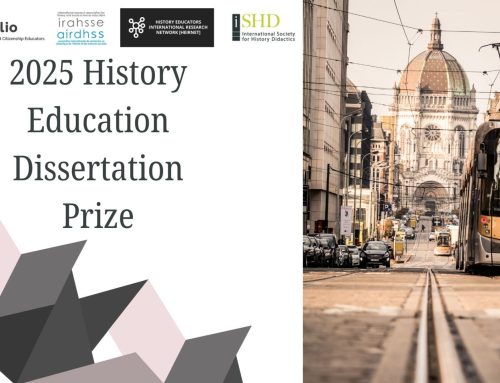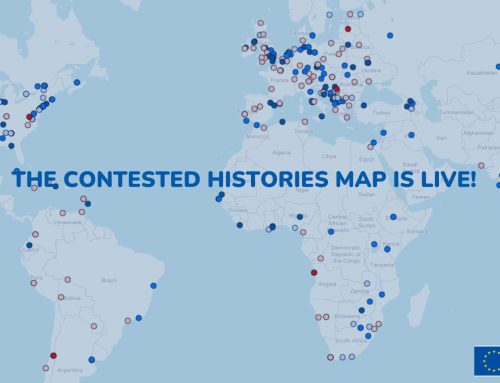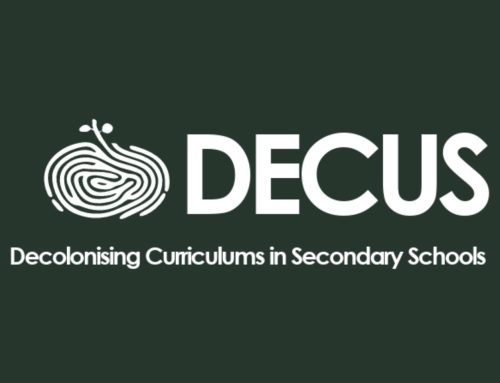This is the second part of a report made by Clara Ramírez Barat and Olesya Skrypnyk on their study visit to Croatia. It is the ninth article in a series of blogposts and reports on all study visits made for the project “Dealing with the Past in History Education”. In this project civil society actors from different backgrounds, visit schools and institutions in countries that are struggling with a difficult past. The first part of this blogpost can be found here.
Continuation of the report
Day 2: Tuesday 31 January
After the conversation in the University the DwP team visited the City Museum of Split. Opened to the public in 1992, in a palace that was built in the15th century. The Museum exhibits the cultural and historical heritage of the city through a stunning collection of artwork (including fragments of monuments and statues that were once parts of buildings in Split) together with numerous documents, photographs, maps and manuscripts that tell the story of the city. After the visit, the DwP team met with one of the museum educators and another educator from the Maritime Museum to learn about their perspectives on the challenges of conveying to young people the recent and difficult history of the country.
As a historical museum, the City Museum of Split, however, does not cover the most recent period of the country’s history. As a matter of fact, from the different museums in Split, it is only the Maritime Museum that includes the history of the 20th Century in its exhibition. According to the Maritime Museum educator, a historian by training, it is difficult to explain the history of World War II and the Independence War to the kids that come to visit the museum. This is even more the case when it comes to students coming from Slavonia, a region from the Eastern part of the country near the border with Serbia, not only because the war was especially felt in that area, but also because the classes are mixed, with both Croatian and Serbian students. Indeed, she had sometimes been warned by teachers to be careful on how she explained this period to them, and to limit her introduction to the basics—the terrible consequences of the war—without entering into details about the causes and the way the war unfolded. She noted that while often students are surprised when they hear about the war, it is important that students today learn about the recent history of the country. Having worked in the museum for five years, she commented that the memory of the war is fading, becoming less important with each generation that passes, and she worries that students today don’t get much exposure to it in the school curricula. She mentioned that while the war is briefly touched upon in primary school, students don’t really learn about it until they are 15 years old. However, this is only if they go to high school, as those who attend technical schools won’t learn more about it in school.
After the visit to the Museum, in the afternoon, the DwP team went to visit Visoka, a primary school in the city of Split, to discuss with the students why for them it is important to learn history, and to find out what they learn about the difficult history of Croatia in school and what more would they like to know about it. In general the kids agreed that studying history was important to understand the present time, to know more about their country and the society in which they live today.
As students in 8th grade, they were planning a mandatory school visit in March to Vukovar, a city that was completely destroyed during the war. They were excited about the trip and expressed eagerness to learn more about the “heroes that defended the country” and about the consequences of the war. When asked why they thought it was hard to talk about these topics in the classroom, they mostly agreed it was because the events are still very close, and many people suffered. All of them know someone who lost a member of their family in the war, and thus for them it is still a very painful history to remember, even if they didn’t live during the war themselves.
Through the conversation, they also recognized that it is still not that common among Croatian kids to have Serbian friends (only some of them did), but they expressed complete normality about the idea of meeting Serbian kids, as they thought the war caused pain on all sides and keeping hatred for what happened won’t solve problems but just prolong them in time. One student even said that Serbian kids learn history from a different perspective than the one that they do, and that is something that has to be acknowledged and respected.
Next, the DwP team visited a history lesson in Prva Gimnazija, a high school in the city of Split. The teacher gave a presentation drawing parallels between the bombing of Guernica, in Spain (1937) and Vukovar, Croatia (1991). After that, the class joined a discussion on the problem of the difficult past in recent Croatian history. The teacher admitted that he remembered “that time” [War of Independence] and that for him it was not easy to teach his students about it without emotions, although he also asserted that he tried his best to be objective so the students could better understand the situation, including the consequences of the war.
Despite the fact that the high school students were born in the late 1990s and didn’t experience the war, they generally agreed that it had a huge impact on them. The students hadn’t covered the theme of the Croatian War of Independence before the study visit was held, but they spoke about how they learned about the events from the family – their fathers participated in the war (though, one of the students mentioned that her father never spoke about his memories of the war). Among other sources of information about the war they listed school trips to Vukovar, documentaries and professors’ lectures.
Young people expressed the desire to be given a full picture of the war events because “if you have knowledge, you cannot be manipulated by newspapers,” to have more classes on these topics, and to develop critical thinking. Media and politicians, in their view, are responsible for the feeling that almost all of them bear inside – “mistrust towards the Serbs.” However, some of the students said that they had friends or relatives in Serbia. One of the students shared her experience of participation in a TV show competition that had taken place in Serbia. Despite her own fears, and the fears of her family before the trip, Serbian people were friendly and kind to them, and she was very pleased to have had the opportunity to be confronted with such a reality.
Day 3: Wednesday 1 February
On February 1st the DwP team had a visit to the Radić Brothers Primary School in Bračević. They had meetings with the pupils of two classes (one of them consists only two students).
In the first meeting, answering the question why it is important to learn history, the students admitted the following:
- Need to know more about what happened in the past [in order not to repeat it in the future];
- Importance of having own opinion;
- War is not a solution, and has serious consequences (destroyed buildings, psychological problems of former soldiers);
- Enjoying the history classes.
Speaking about the recent past, the students admitted that they lacked the information in the textbooks. Usually teachers “tell the things which are not in the textbook.” They also learn from the TV programmes and search for information on the Internet (e.g. witnesses of Vukovar, events in Bleiburg and Jasenovac). Sometimes their parents tell “some things” (e.g. not only Serbian soldiers committed crimes during the war), and they discuss the topic among themselves as well.
Like their peers from primary school Visoka, pupils in Bračević were looking forward to visiting Vukovar, learning how people had lived there during the war, and seeing the hospital [memorial], which would help them to “protect our country”.
The teacher told the team about the school projects: one with the Serbian kindergarten, named by Nicola Tesla, and the other about Anne Frank. She mentioned those projects aimed to prevent war.
The second meeting was held with the class of two pupils. They considered it important to learn history, especially recent history, to know how their country came into existence. As mentioned by one of the students “we fought for it for centuries.” Speaking about what they know about the difficult history, the pupils regarded Vukovar as a “symbol of struggle.”
The students know of Vukovar and the Croatian War of Independence through different school subjects, from the history teacher, and from family members or elderly people. They also wished to have more lessons so that they could learn about the things they are interested in (e.g. WWII, its causes and consequences).
They presumed that Serbian people “are not that bad,” and one of the students said that she had contact with peers from Serbia, whose fathers belonged to the same motor-club as her father.
The teacher added that he tries not to give conclusions about what is good or bad, moral or immoral, but the facts, so that the students could make some conclusions themselves. He also admitted, that for him the most challenging period of Croatian difficult history is WWII.
This concludes the report of Clara Ramírez Barat’s and Olesya Skrypnyk’s study visit to Croatia. This study visit has been a part of the project “Dealing with the Past in History Education”, supported by the Robert Bosch Stiftung. For more information on this project, please visit the project page.

